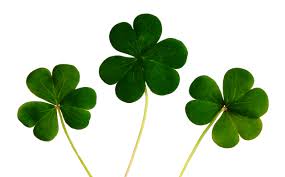Benefits Bulletin
Healthy Musts for a Lucky St. Patrick’s Day
March 13, 2017
Benefits Team
On March 17, many people commemorate the death of St. Patrick, patron saint of Ireland, by wearing green and decorating with shamrocks. There are many traditional foods and drinks that accompany a St. Patrick’s Day celebration. Some foods and drinks are healthier than others; knowing a few facts about each may help you make the most nutritious eating and drinking decisions on St. Patrick’s Day.
Eat Corned Beef in Moderation
One of the most common meals eaten on St. Patrick’s Day is corned beef. While a small 3-oz. portion of corned beef will supply about 15 g. of protein, as well as some iron and zinc, this meal can also be quite high in fat and salt. One 3-oz. portion of corned beef contains a little over 16 g. of fat and 964 mg. of sodium. If you choose to enjoy corned beef as part of your St. Patrick’s day celebration, stick to one serving so you do not eat more fat and salt than what is part of a nutritious meal.
Load Your Plate with Cabbage
Cabbage almost always accompanies corned beef as part of a traditional St. Patrick’s Day meal. Eating plenty of vegetables is nutritious way to maintain your health, and loading up on the cabbage has only 17 calories and less than 1 g. of fat. The same serving of cabbage supplies 1.4 g. of fiber and 147 mg. of potassium. Cabbage also contains calcium, magnesium, vitamin A and vitamin K.
Drink In Moderation
Alcohol has a starring role in many St. Patrick’s Day celebrations, and can be enjoyed as part of a nutritious diet as long as you stop after one drink if you are female or two drinks if you are male. Mayo Clinic emphasizes that moderate amounts of alcohol may actually benefit your health, but drinking too much alcohol can lead to many health problems, including heart damage. One drink is equal to 12 oz. of beer, 5 oz. of wine or 1.5 oz. of spirits like whiskey or rum. Drink plenty of water with your alcohol as well.
Restrict Green Food Coloring
According to the Center for Science in the Public Interest, many food dyes are potentially dangerous and may even cause allergic reactions. It recommends cutting back on food dyes in packaged foods, because there is research that suggest that artificial coloring may cause cancer or harm other systems in your body. Green 3 dye is potential carcinogen, but is not used in many products outside of candy and beverages. Blue and yellow dyes may also be used to create vibrant green color for foods like candy, baked goods, desserts and beverages. Enjoy one green treat and pass on the rest.
References
“The Wearing of the Green: A History of St. Patrick’s Day”; Mike Cronin and Daryl Adair; 2006
Mayo Clinic: Alcohol Use: If You Drink, Keep It Moderate; March 2011
USDA: Beef, Cured, Corned Beef, Brisket, Cooked
USDA: Cabbage, Cooked, Boiled, Drained, Without Salt\
Center for Science in the Public Interest: Chemical Cuisine: Learn About Food Additives
